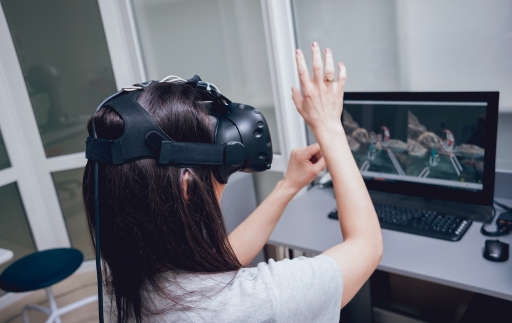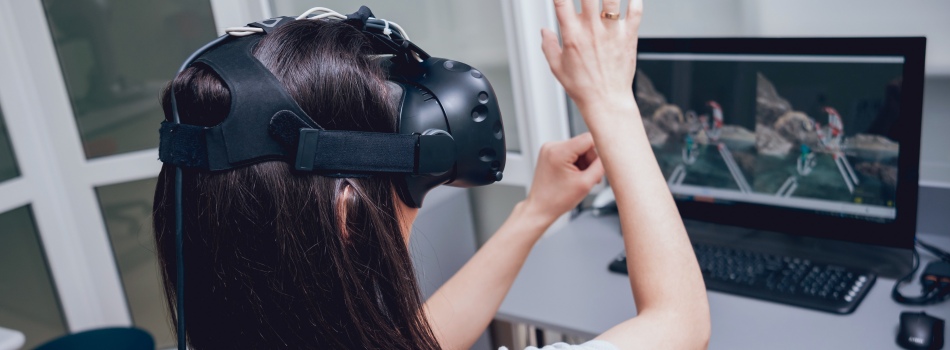
Highlights
- New virtual reality and augmented reality tools are changing how occupational therapists teach patients safe lifting techniques.
- VR and AR provide a safe, simulated environment for patients to practice safe lifting techniques without the risk of injury.
- AR and VR technologies offer multiple evidence-based benefits for OTs and patients, such as real-time feedback, movement tracking, and a fun, engaging format.
Occupational therapy (OT) is critical to fostering and restoring function in individuals experiencing difficulties performing everyday tasks due to physical or cognitive impairments. A component of this therapy involves teaching and promoting safe lifting techniques to prevent injury and promote efficiency in everyday life and work settings.
Emerging technologies such as virtual reality (VR) and augmented reality (AR) are being harnessed to revolutionize OT training and practice. These immersive technologies create simulated environments or augment real-world settings tailored to meet each individual’s unique requirements, offering a level of personalization and safety previously unattainable.
Understanding the benefits of these technologies can help you provide patients with a personalized learning experience and real-time feedback. This can heighten patient engagement and promote efficient skill transfer for better patient outcomes.
VR and AR in OT for Heavy Lifting
VR and AR have transformed OT by offering immersive and interactive experiences to patients. VR uses computer-generated simulations to create lifelike environments, while AR overlays digital information onto the real world.
These technologies have impacted how OT patients learn and practice safe lifting techniques, particularly in rehabilitation settings. For instance, in a rehab center, VR can transport patients to a virtual workspace where they can learn proper lifting mechanics, such as body positioning and weight distribution, without the risk of injury.
Providers can use AR during OT therapy sessions to deliver feedback, highlight and correct movements, and identify areas for improvement. This is done by attaching kinetic tracking devices such as Leap Motion and Kinect sensors to the patient as they interact with the AR/VR system.
The personalized approach supported by these technologies can increase patient engagement and allow therapists to assess progress and ensure a safe and efficient recovery process.
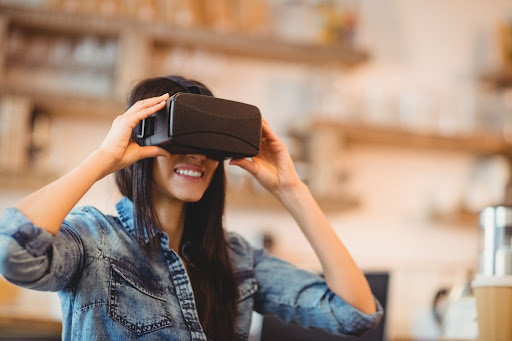
Simulation Methods Used in OT for Safe Lifting Techniques
Two main types of simulation technologies are used in OT: interactive and non-interactive. Non-interactive simulations involve observing pre-recorded videos or animations that demonstrate proper lifting techniques.
These simulations are often used in industrial training settings in warehouses or factories. However, while these provide visual information, they lack active participation, hindering patient progress in a rehabilitative environment.
Interactive simulations facilitated by VR and AR systems offer patients a hands-on and immersive experience. These systems are effective for teaching and practicing lifting techniques.
Using VR headsets or AR platforms, patients can step into a virtual workspace to interact with objects, simulate lifting scenarios, and receive direct feedback from their therapist. This approach allows them to actively engage their muscles, improve balance and mobility, and develop a kinesthetic understanding of the body mechanics involved in safe lifting.
For example, therapists can use an interactive VR system to guide a patient through lifting exercises in a simulated environment to assist in recovery. Patients can practice picking up virtual objects of varying weights and adjusting their body positioning and receive immediate feedback on their technique.
This OT approach promotes personalized learning and creates a safe and controlled space for building upper extremity strength, improving coordination, and regaining confidence in a patient’s lifting abilities.
HMD-VR in OT
Head-mounted displays for virtual reality (HMD-VR) are immersive devices that provide a VR experience by enclosing the user’s field of vision. These devices, worn like a headset, create a simulated environment that can transport patients to different scenarios and settings, making them ideal for therapeutic interventions.
By immersing patients in a virtual world, HMD-VR enables a more engaging and interactive experience, improving the effectiveness of OT interventions. This can be especially beneficial for patients who can’t leave home due to anxiety or mobility issues.
OT therapists can use HMD-VR for home-based therapy, allowing patients with chronic pain or mental health challenges to engage in lifting technique practice at their convenience. Using a VR system and physiotherapy app, patients can receive guided exercises, immediate feedback, and long-term progress tracking, letting them access OT therapy from their homes.
Evidence-Based Benefits of VR and AR in OT
Using evidence-based approaches to treating your patients ensures they receive the best care possible. VR and AR offer several research-backed benefits for your patients, including:
Supports Motion Tracking
AR and VR technologies allow motion tracking, enabling you to provide detailed, real-time patient feedback. A 2021 review mentions low-cost tracking devices, such as Leap Motion and Kinect sensors, as well as commercial products, like HoloSuit and PrioVR, that have embedded sensors and haptics capabilities.
These tools allow OTs to accurately track patient movements to assess progress and provide helpful insights for improvement. According to a 2020 review, real-time feedback in OT can help patients increase their loading by up to 63% when receiving the feedback.
Enhances Patient Comfort
Among its many benefits, VR training offers patients cost effectiveness, convenience, and comfort. A 2021 review states that VR allows for repeated practice in various scenarios, can be accessed easily through the internet, and enables patients to learn in the privacy of their personal space.
This is particularly beneficial for individuals who may feel uncomfortable performing tasks in front of others. While many OT lifting scenarios require the presence of instructors to provide feedback and address performance issues, VR training can provide a safe and comfortable environment that enhances the learning experience and increases patient engagement.
Increase Patient Motivation
During repetitive OT therapy sessions, patients may struggle to complete movements or with motivation. According to a 2017 review, one of the primary benefits of VR for OT is its fun, game-like format.
The review explains that VR increases patient motivation by incorporating fun and goal-oriented tasks. The repetition of these tasks in a virtual environment promotes neuromotor changes and enhances the client’s motor skills.
By combining goal-oriented and repetitive tasks, VR therapy stimulates neuroplasticity and encourages patients to engage in enjoyable and purposeful movements, ultimately boosting their motivation to participate in rehab activities.
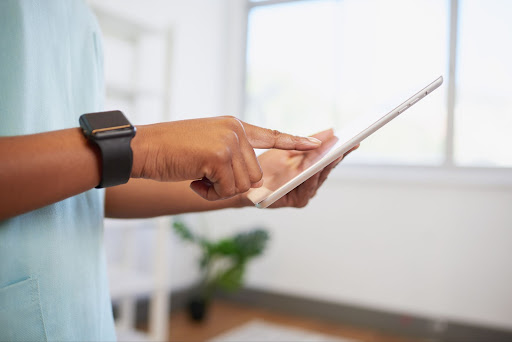
Support Your OT Therapy Practice With Innovative Technologies
Embracing innovative technologies such as VR and AR can expand the treatment approaches you use at your OT practice. To support your treatment efforts, use a cloud-based integrated therapy practice management software like ClinicSource. ClinicSource uses automation and AI-powered analytics to streamline administrative tasks and allow you to focus more on patient care.
Schedule a demo today to learn how a cloud-based therapy EMR can simplify documentation and billing so you can focus on offering novel therapies to your patients.
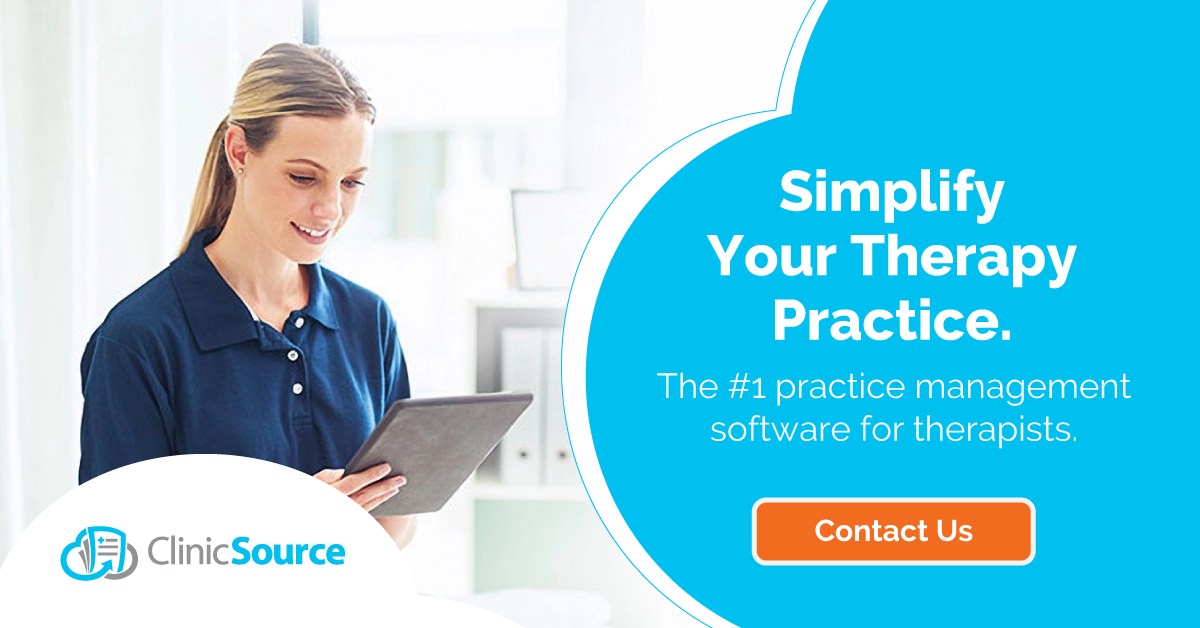
Let Us Show You



